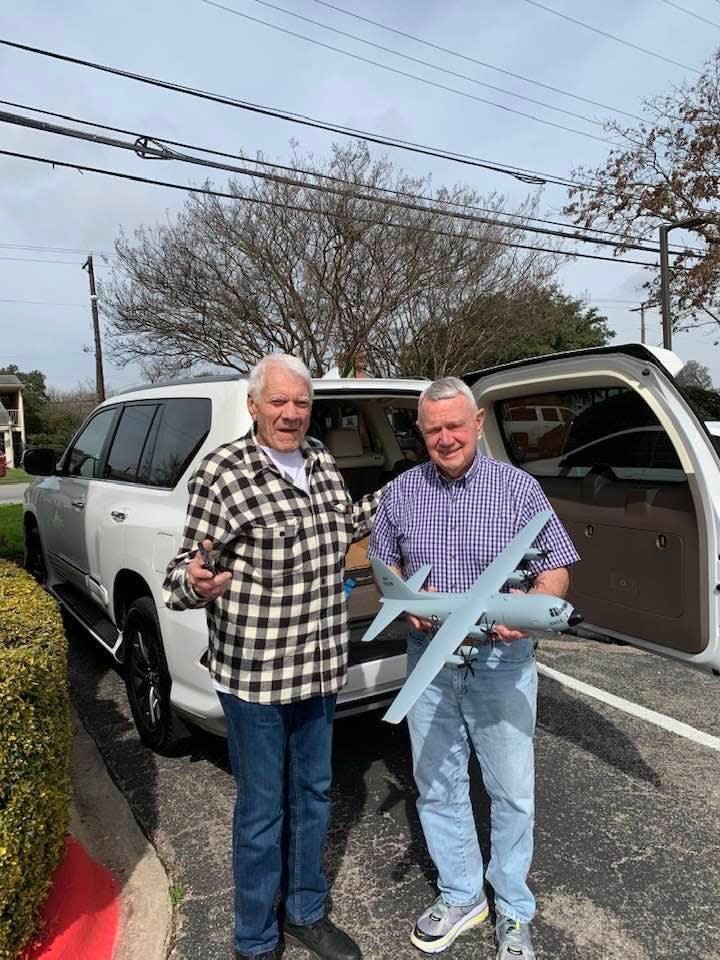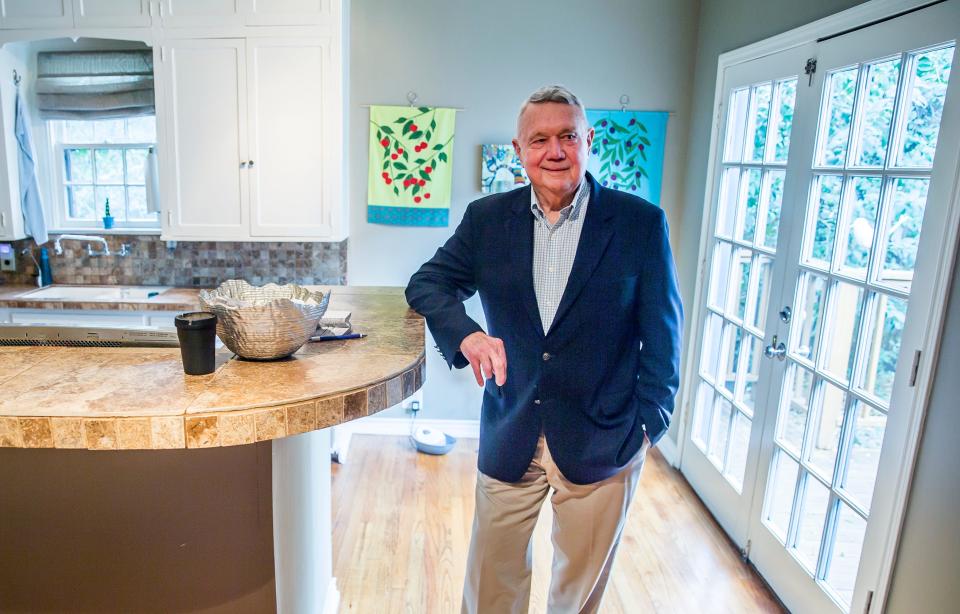Former Austin mayor Lee Leffingwell survives aortic aneurysm after catching it early
- Oops!Something went wrong.Please try again later.
The flu saved former Austin Mayor Lee Leffingwell's life.
Leffingwell, 83, had come down with the flu in March 2022, and then it developed into bronchitis. An X-ray that April of his lungs revealed something else: an aortic aneurysm.
Quitting smoking and taking up running in 1977 also saved Leffingwell's life. Leffingwell was a pilot for Delta Air Lines after being a Navy pilot. Airline pilots have to have a physical every six months. That, he said, determined "do you have a job or don't you have a job?"
At the time, he would start every morning with a cigarette, and he was pretty sedentary. He knew he wasn't as healthy as he needed to be. In 1977, he smoked his last cigarette and took up running instead, he said. He ran 10K and 5k races in Atlanta where he was living at the time. Then he started running in Austin when he moved his family back to his hometown in 1979, decades before joining the City Council in 2005 and becoming mayor in 2009.
His knees stopped his running career, but Leffingwell continued to walk and estimates he remains a 20-hour a week walker.
"I'm a firm believer that you got to keep moving as you get older," Leffingwell said. "As Darrell Royal (the late University of Texas football coach) said, 'When the going gets tough, the tough gets going.'"
Because Leffingwell was in great shape, his cardiac surgeon, Dr. Faraz Kerendi of Cardiothoracic and Vascular Surgeons, had no doubt he would do well during a surgery on July 14 to take out the aortic aneurysm. That isn't always the case in someone Leffingwell's age, Kerendi said.
Medical luck: How a chance CT scan found an Austin man's lung cancer
What is an aortic aneurysm?
Any aneurysm is a bulging or ballooning of the walls of an artery. Often the walls in that area also are thinner. That puts the artery at risk of rupturing or partially tearing in that spot. The aorta is the main artery that carries the blood from the heart to the rest of the body.
If an aneurysm in the aorta ruptures or partially tears, "most of the time, it's sudden death," Kerendi said.
That is what happened to Grant Wahl, a reporter who was covering the World Cup last fall and died during the tournament.
An aortic aneurysm is tricky because unlike other forms of heart disease or heart conditions, it doesn't cause symptoms. It's either discovered by accident on an X-ray, as in Leffingwell's case, or it's discovered after it ruptures.

Who gets aortic aneurysms?
There are some things that can increase the risk, but "unfortunately, it's just bad luck," Kerendi said.
It's uncommon in people younger than 40, but it's not impossible. Typically, an aortic aneurysm takes time to grow to become a problem. It's more common in men.
Some genetic conditions such as Marfan syndrome and Ehlers-Danlos syndrome, which both affect connective tissues, lend themselves to an increase rate of aortic aneurysms. People with those conditions typically receive regular scans to watch for an aneurysm.
People who smoke, have high blood pressure, high cholesterol and hardened arteries have an increased risk of an aortic aneurysm.
Miracle heart surgery: One of smallest babies to have heart surgery goes home from Dell Children's

How is an aortic aneurysm fixed?
"It's a big operation," Kerendi said. "It's open-heart surgery."
Kerendi puts the heart and lungs on a bypass machine while he removes that section of the aorta and replaces it with a woven polyester tube.
In Leffingwell's case, he also had a leaky aortic and mitral valves. Kerendi replaced the aortic valve with a pig valve and repaired the mitral valve during the same surgery.
When considering the surgery, Leffingwell said he only thought about it for a minute. "If something is there that has the potential to tear or break in the aorta, and you would die by the time you could get to the hospital, well, there are worse ways than that to go, but, no, I'm not quite ready for that."
He knew it would take some time to recuperate, and that there was the risk of complications. He did a return on investment analysis.
He said he decided "to take that risk to enjoy my life better."
His wife, Julie, was a big motivator as well. She's a retired intensive care unit nurse. "She's very hands on and quite bossy, too. ... It would have been a lot tougher had I been alone."
An aneurysm leading to stroke: After a stroke as a baby, Austin boy gets surgery to separate the halves of his brain
What's the recovery like after surgery?
"It's a lot for anybody," Kerendi said. Typically, it's about a two- to three-month recovery.
Leffingwell was able to walk around well after a couple of weeks and was back to doing his 20-hour a week walking by three months. He did have to work up to that.
He has noticed a change. "I do have more wind and more energy," he said.
Leffingwell said he would tell anyone who might be considering the operation, "don't be too afraid of it. You're going to get over it. It's going to uncomfortable for a while."
This article originally appeared on Austin American-Statesman: Austin mayor Lee Leffingwell's aortic aneurysm could have killed him

